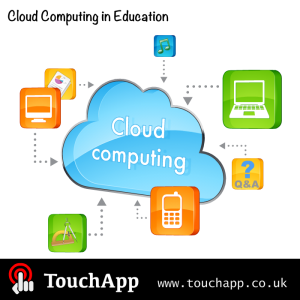What is “Cloud” Computing?
 As a technology metaphor, “cloud” computing usually refers the method by which applications and data are hosted and delivered over the Internet instead of local devices. For decades, people store data or run programs from the hard drive of the conventional computers, but the rapidly evolved “cloud” computing supporting real-time data synchronised on remote servers allows people to access the information anywhere, anytime.
As a technology metaphor, “cloud” computing usually refers the method by which applications and data are hosted and delivered over the Internet instead of local devices. For decades, people store data or run programs from the hard drive of the conventional computers, but the rapidly evolved “cloud” computing supporting real-time data synchronised on remote servers allows people to access the information anywhere, anytime.
“Cloud” computing can be divided into three separate categories or levels. Infrastructure as a service (IaaS) is the first level. For example, Amazon provides “Cloud” infrastructure, which can be used by other business to run their own systems and applications. The second level is known as Platform as a service (PaaS). Facebook and Google all provide web platforms to enable users to install and run applications from third parties. Software as a service (SaaS) is the highest level of “cloud” computing. This holds the greatest potential in education. Many education initiatives are delivered in the form of SaaS and the applications range from personalised training, online assessment and students’ management system etc.
Advantages of “Cloud” Computing:
Anywhere Access
“Cloud” computing increases content liquidity, thus teachers and students can access the learning materials from anywhere in the world. For education, this means that students can study at home or traveling and it is also possible to carry out collaboration projects with students from different geo-locations.
Elasticity
Unlike traditional devices with limited storage capacities, “cloud” computing provides an extendible approach. Institutions can start with small-scale service and build it up gradually without significant up-front investment. There is no need to plan usage levels in advance and you will never have to worry about, you run out of space.
Potential Cost-savings
“Cloud” services are generally provided through monthly or annually subscriptions programme and you can usually terminate your use of the service with very short notice to reduce the cost. And since you don’t need to install software, some hardware can be removed or redeployed to free up valuable real estate.
Automatic Updates
With “cloud” services, education institutions don’t need to have in-house experts to maintain the service. Serve providers will notify you, and usually provide one-click updates. It allows schools and universities to concentrate on their core business of education and research.
Risks of “Cloud” Computing:
Data Security and Privacy
A major concern about “cloud” computing is around the security of data. Education institutions dealing with students’ information may concern about the breach of confidentiality will lead to high costs and adverse publicity. Service providers can apply spam filtering, data encryption and safer HTTPS access technology to minimize the risk.
Loss of Control
Using “cloud” means you rely on the providers to update and backup. If the server stops working, users have the potential risk of losing all the data. In addition, the cloud provider may sell valuable user information to third parties for advertising purpose.
Future
Education institutions have specific requirements in order to migrate their core activities to the cloud. Instead of using generic services such as email, they usually need bespoke applications to meet pedagogy, government policies, regulations and funding regimes etc. Due to the risk aversion nature of education institutions, complex learning management systems (LMSs) will be slower to move to the cloud. However, with the penetration of broadband Internet, especially through mobile devices, new generation of students are getting used to store data in the “cloud” rather than on their own devices. Students instead of institutions may therefore drive the adoption of “cloud” education. Some LMSs such as Blackboard and Moodle are already available in the “cloud”. More institutions are likely to accept the “cloud” model, if securer and cheaper service can be guaranteed by the providers.
Follow us on Twitter: @TouchApp_uk
From Mobile App development company TouchApp
![]()